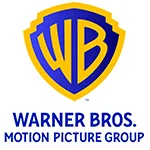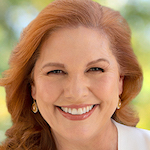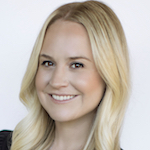 Matthew Schwartz |
‘Tis the season. Holiday work parties are a time for folks to catch their breath from the daily grind and have a few cocktails along with assorted canapés. Considering it’s a social occasion it’s also a good time for brands and organizations to think about more effective ways to communicate with their constituents via live events and conferences.
Despite the web—or more likely because of it—business professionals are eager to get out to the field more frequently and press the flesh. Indeed, nearly half of American adults say they prefer in-person communication, per a recent poll by Survey Monkey for “Axios on HBO.”
All things digital has become the default mode for a growing number of PR and marketing executives, of course. But the savvy communications pro would be foolish to underestimate the opportunity live events offer to cultivate and expand relationships—and spike the top and bottom lines.
B-to-B events account for $512 billion in annual spending, according to a Bizzabo survey of 400 mid- to senior-level executives. What’s more, 87 percent of C-suite executives plan on boosting their events investments, the survey said.
The challenge for B-to-B events is not how to obtain buy-in from the tippy top—or get people through the door—but how to make the event stand out so attendees are left with a positive feeling about your brand or organization.
To be sure, event apps designed to drive registration are de rigueur. It’s also the norm for companies to leverage their websites and social channels to market events and conferences. Ditto for digital screens strategically planted throughout the conference so attendees can track the latest tweets about the conference and “DM” one another.
But how are you going to make the event content memorable? How do you bottle some of the good vibes wafting in the air and convert them into something more tangible?
The aim for communicators is to produce events that grab mind share and give attendees an excuse to build stronger ties with the company.
With that in mind, here are a few ways to bolster your next event and/or conference:
Select a unique site. Since time immemorial, corporate events have taken place at the nearest and most conveniently located hotel. That’s fine. But why not select a locale that’s off the beaten track? We recall a wonderful event at the U.S. Custom House in lower Manhattan. Simply walking into the ornate, seven-story Beaux Arts structure put attendees in a chatty mood. Indeed, the more unique the building/interior environment the more people will likely engage one another and be less inclined to check their smart phone every five seconds. The larger takeaway for communicators is to pick a notable or historical site for your event. People like to check out places they haven’t been before. It not only increases registration. It builds anticipation among attendees who, in turn, will be eager to share information about the event. A tonier locale may require a bit more budget, but it’s worth it.
Keep the work session tight. Less is more. Short is sweet. Pick your metaphor. Whatever you do, don’t schedule programs or work sessions that exceed an hour. The 75-minute presentation followed by a Q&A no longer applies in a post-digital age. TED Talks remain the gold standard for how to communicate big ideas and inspire like-minded people. These are generally 15-minute discussions on every topic under the sun. What tends to separate TED Talks is that speakers personalize the conversation and speak directly from the heart, without any filter, e.g. Monica Lewinsky discussing “The price of shame.” TED speakers generally don’t rely on graphics or cutesy videos to relay the overall message. That’s in keeping with what a PR veteran advised us years ago that “Friends don’t let friends PowerPoint” when giving a presentation.
Encourage engagement among attendees. It seems that more and more business events offer something in which attendees can participate—rather than everyone trudging from one work session to another for hours on end, only to be interrupted by a garden-variety luncheon. Akin to Lucy van Pelt’s psychiatry booth, perhaps you set up a “troubleshooting” area in which buyers and sellers are encouraged to meet and discuss their pain points and craft some possible solutions. In a lighter vein, one corporate event we recently attended employed a digital sketch artist from Drawn Together NYC who drew personal caricatures for anyone interested which, in turn, sparked conversation among curious onlookers. Be careful not to have these efforts come off as enforced recreation. Sell the participatory stuff as optional. But be sure to include that information in all of your marketing materials. Your customers and constituents will be more inclined to attend events if they know there’s going to be ample networking opportunities rather than a bunch of talking heads who may not know more about the industry than they do.
What are we missing? And what are you doing to enhance your events and conferences from a PR perspective?
Happy holidays.
Matthew Schwartz is director of content at Stanton, a communications firm with offices in New York and California. He can be reached at [email protected]


 Katie Martin Kelley has joined Warner Bros. Motion Picture Group as executive VP-communications.
Katie Martin Kelley has joined Warner Bros. Motion Picture Group as executive VP-communications. Doug Mishkin, who was in charge of the National Football League’s gambling-related commercial activities, has joined Bryan Cave Leighton Paisner’s global sports and entertainment group.
Doug Mishkin, who was in charge of the National Football League’s gambling-related commercial activities, has joined Bryan Cave Leighton Paisner’s global sports and entertainment group. Kristina Schake has joined Walt Disney Co. as executive VP-global communications as she wrapped up a 10-month stint as the Biden administration’s COVID-19 public education campaign director.
Kristina Schake has joined Walt Disney Co. as executive VP-global communications as she wrapped up a 10-month stint as the Biden administration’s COVID-19 public education campaign director. Sean Smith is leaving the EVP of corporate counsel spot at Porter Novelli to join the Recording Academy, which runs the GRAMMY Awards, as EVP of communications, effective Oct. 25.
Sean Smith is leaving the EVP of corporate counsel spot at Porter Novelli to join the Recording Academy, which runs the GRAMMY Awards, as EVP of communications, effective Oct. 25. Dana Steiner, publicist for the late Larry King, is joining Clarity as VP, media and entertainment.
Dana Steiner, publicist for the late Larry King, is joining Clarity as VP, media and entertainment.


 Have a comment? Send it to
Have a comment? Send it to 
No comments have been submitted for this story yet.